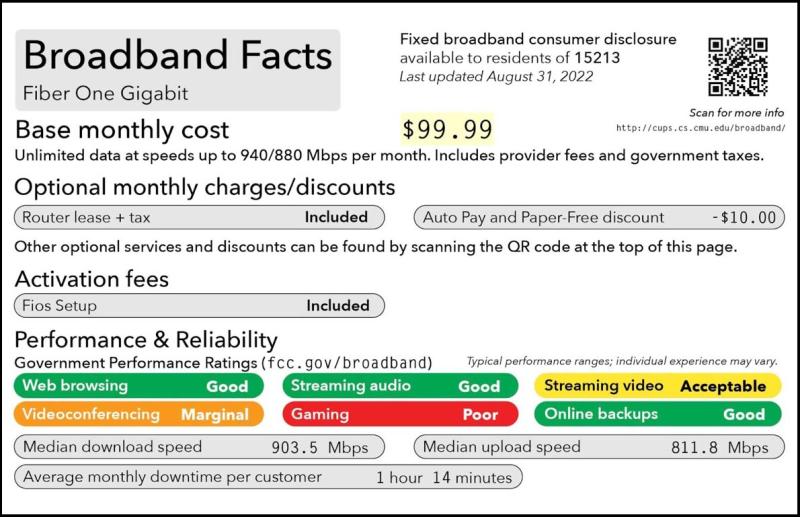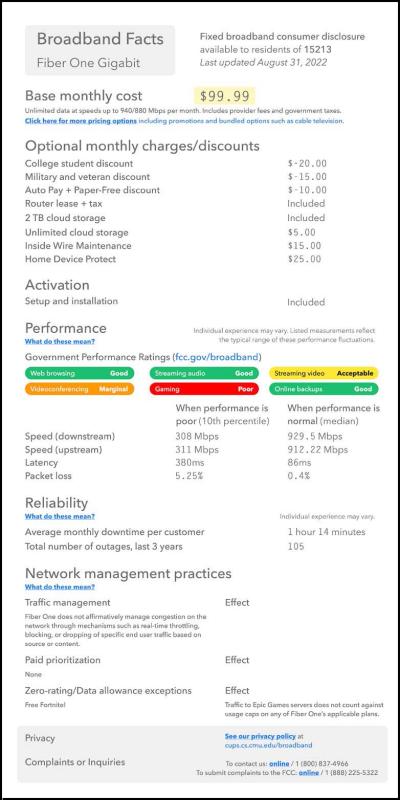As the Federal Communications Commission (FCC) seeks to implement broadband “nutrition” labels in the market, there has been discussion on what information these consumer labels should specifically include.
New research from Carnegie Mellon’s CyLab Security and Privacy Institute suggests people prefer having more details about broadband performance – including when a provider’s service is considered “normal” or “worse than normal.”
In a study of over 2,500 U.S. consumers, CyLab asked participants how they felt about the FCC’s initial broadband consumer label formats from 2016. Based on those results, CyLab created its own layered label design, with both a summary of the service and a more detailed view.

One major takeaway was consumers were interested in measures of performance other than download speed. They wanted to know about a provider’s service in “normal” or “much worse than normal” conditions, rather than the typically advertised top internet speeds.
Pricing is also key, as consumers using the FCC’s 2016 labels said they struggled to compute total service cost over a several-year span. Part of the reason why was that they were confused by the technical terms used in the labels.
Though consumers want labels that were easy to understand, they generally want to see more, not less, information, according to CyLab.
The study indicated that while most people didn’t know the meaning of more technical terminology – such as latency, packet loss and network management practices – consumers often showed some understanding of the concepts once the terms were briefly explained to them.
Industry groups have argued against the inclusion of these technical metrics in broadband labels. WISPA and NTCA – The Rural Broadband Association told the FCC providing such details could prove pointless if they aren’t “typically requested by the consumer.”

The FCC laid the groundwork for consumer information labels back in 2015 with its Open Internet Order, later releasing a basic framework for the labels in 2016.
After the FCC overturned the Open Internet Order in late 2017, the broadband label initiative was effectively shelved until January 2022, when the FCC approved a Notice of Proposed Rulemaking to begin label implementation – based on guidance from the Infrastructure Investment and Jobs Act.
CyLab recommended the FCC balance the needs of consumers who value conciseness with those who are looking for more information. For instance, the Commission can create a standardized label format and maintain a glossary of terms that can be used to compare multiple service plans.
CyLab added providers should be required to submit detailed plan information to a public database, so that third-parties can generate customized consumer labels that offer details such as, comparison shopping tools, quality of experience and other value-added services.
